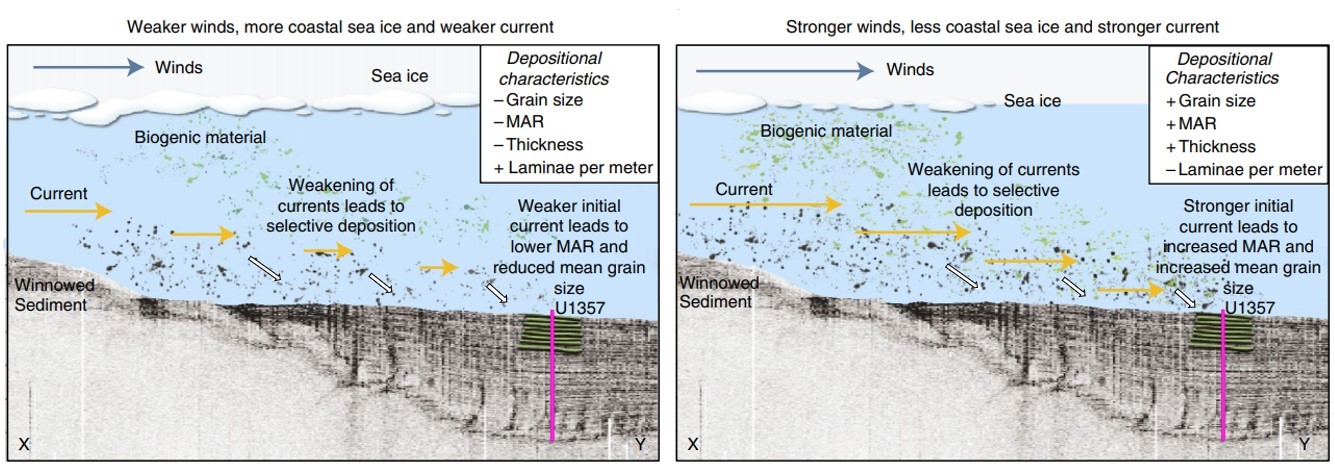Relations between the Antarctic primary productivity and sea-ice changes with the subdecadal-scale climate variability during the last 11,400 years
2021-09-10
Antarctica’s marine margin plays an important role in the global carbon cycle through Antarctic Bottom Water formation and primary productivity. An international joint research teams, which include researchers from University of Tokyo, Nagoya University, Victoria University of Wellington, and Stanford University, investigated a 170-m-long sediment core recovered from the Adélie Basin along the Wilkes Land margin of East Antarctica. The study revealed that sea-ice variations off the coast of the East Antarctica are closely linked to subdecadal-scale climate modes (for example, El Niño–Southern Oscillation, Southern Annular Mode and Indian Ocean Dipole) during the past ~11,400 years. This finding was published in Nature Geoscience on September 9, 2021. The finding will be used to improve models for future prediction of the global carbon cycle and the marine biogeochemical cycle.
Paper information
Katelyn M. Johnson, Robert M.McKay, Johan Etourneau, Francisco, J. Jiménez-Espejo, Anya Albot, Chiristina R.Riesselman, Nancy A.N.Bertler, Huw J.Horgan, Xavier Crosta, James Bendle, Kate E. Ashley, Masako Yamane, Yusuke Yokoyama, Stephen F. Pekar, Carlota Escutia and Robert B.Dunbar. Sensitivity of Holocene East Antarctic productivity to subdecadal variability set by sea ice. Nature Geoscience. (2021). https://doi.org/10.1038/s41561-021-00816-y
Figure

The conceptual diagram of the relations with changes of the atmosphere and the ocean and various changes recorded to sediment.


